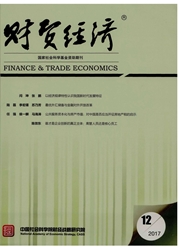

 中文摘要:
中文摘要:
本文利用跨国面板数据测算了G20国家的服务贸易出口技术复杂度,并将其纳入产业转型升级的动态面板模型进行了分析。研究发现:从分项服务产品出口来看,商业服务、旅游和交通运输具有较高的出口技术复杂度,而政府购买、保险和通讯则相对较低;从国别来看,美、英、法具有较高的出口技术复杂度,而印度、中国和印尼较低;另外,出口技术复杂度与产业转型升级呈显著的正相关关系。鉴于此,我国应加强服务贸易领域的人力资本积累、推动高端服务外包发展以扩大服务贸易出口技术复杂度,并重新诠释产业转型升级的基本逻辑,从单纯强调“高技术产业”向“优势产业组合”转变,并最终重新确立中国在世界服务贸易版图中的定位。
 英文摘要:
英文摘要:
This paper calculates the technical complexity index of service trade export and puts it into a dynamic panel model of industrial transformation and upgrading, with the cross--country panel data of G20 countries. The main conclusions are as follows. For partial services export, business services, tourism and transportation have had higher export technical complexity, however, government purchase, insurance and telecommunications have been lower. America, Great Britain and France have higher export technologies, while those of India, China and Indonesia are lower. In addition, there are significant positive correlation between export technical complexity and industrial transformation and upgrading. In conclusion, China government should strengthen the human capital accumulation of service trade, and promote high-end service outsourcing development to expand service export technical complexity. At the same time, China government should also reinterpret the basic logic of industrial transformation and upgrading. If China hopes to entrench its position in the world service trade, the government has to change the policies from the high technology industry to dominant industrial combination.
 同期刊论文项目
同期刊论文项目
 同项目期刊论文
同项目期刊论文
 期刊信息
期刊信息
